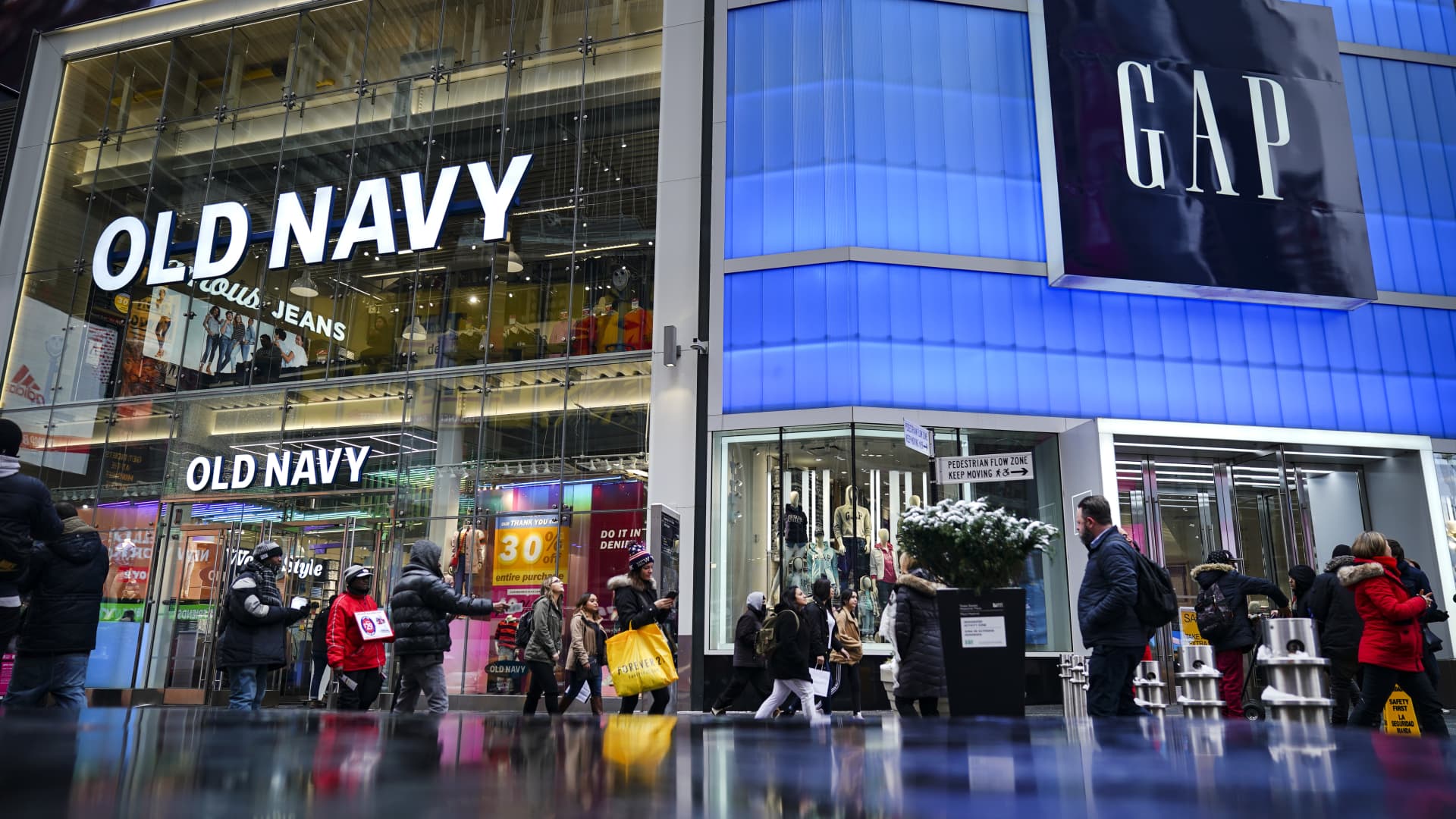Gap reported mixed results on Thursday and underwhelming current-quarter guidance as the longtime mall retailer saw another quarter of declining sales across all four of its brands.
The company beat Wall Street’s estimates on the bottom line but fell short on the top.
Here’s how the apparel retailer did in its fiscal second quarter compared with what Wall Street was anticipating, based on a survey of analysts by Refinitiv:
- Earnings per share: 34 cents, adjusted vs. 9 cents expected
- Revenue: $3.55 billion vs. $3.57 billion expected
The company’s reported net income for the three-month period that ended July 29 was $117 million, or 32 cents per share, compared with a loss of $49 million, or 13 cents per share, a year earlier. Excluding one-time items, Gap reported a net income of 34 cents per share.
Sales dropped 8% to to $3.55 billion, compared with $3.86 billion a year earlier.
Gap has a new CEO at the helm: former Mattel executive Richard Dickson, who started in the new role on Tuesday. The company is betting the branding expert, who oversaw Mattel’s Barbie franchise, can breathe new life into Gap’s brands, its namesake banner, Old Navy, Banana Republic and Athleta.
All four of the brands, which have vastly different assortments and customer bases, have seen quarter after quarter of sagging sales – a trend that Dickson will look to turn around.
Gap’s chairman Bob Martin, who served as interim CEO for more than a year prior to Dickson’s appointment, had been working to restructure the business and streamline its management organization so the new chief executive would be able to hit the ground running as soon as he arrived.
Over the last year, Gap has cut more than 2,000 employees, or about 25% of its corporate roles, which has increased the number of direct reports for each manager from two to four and reduced management layers from 12 to eight, the company said previously.
The cuts were designed to remove layers of red tape and bureaucracy to make Gap more nimble in its decision-making and focused on its creative efforts, the company said previously.
The layoffs are saving Gap about $300 million, the first half of which will come in fiscal 2023. During its last quarter ended April 29, Gap’s margins shot up 5.6 percentage points year over year to 37.1%, sending its stock surging in aftermarket trading despite another quarter of declining sales.
This story is developing. Please check back for updates.
